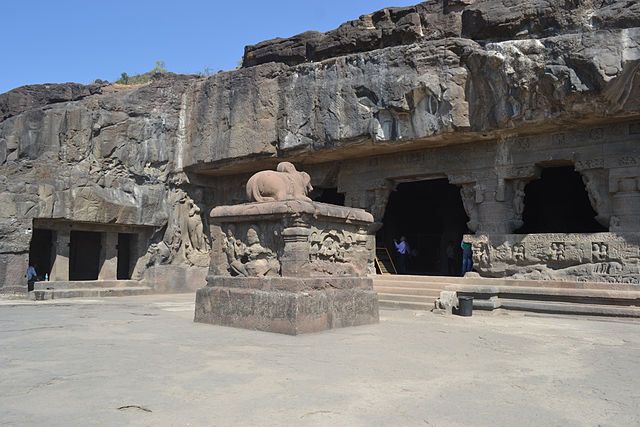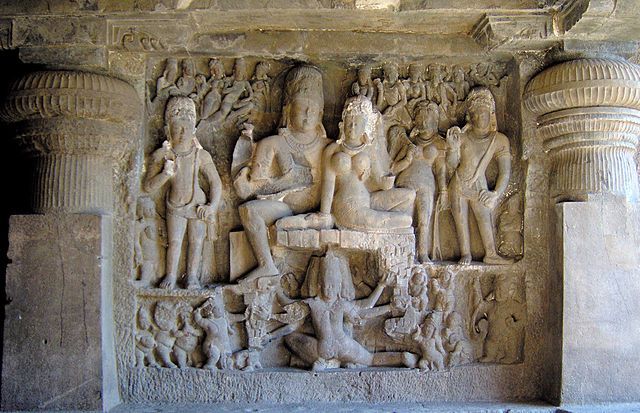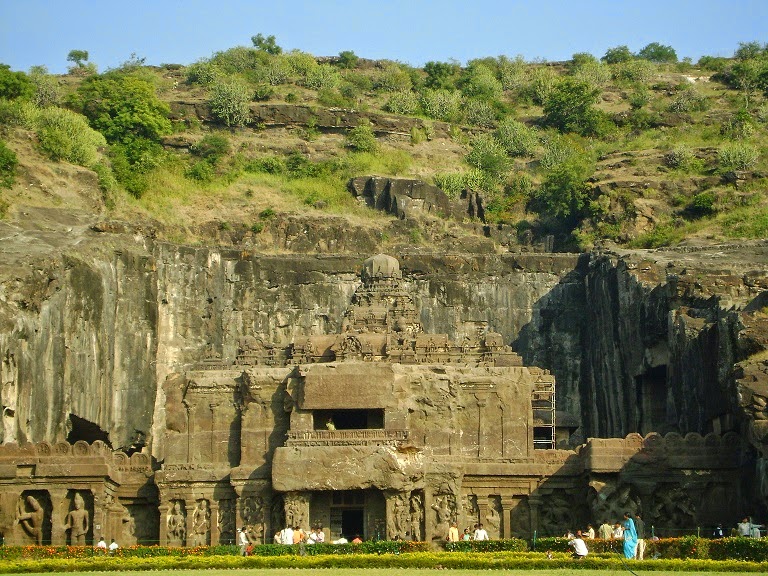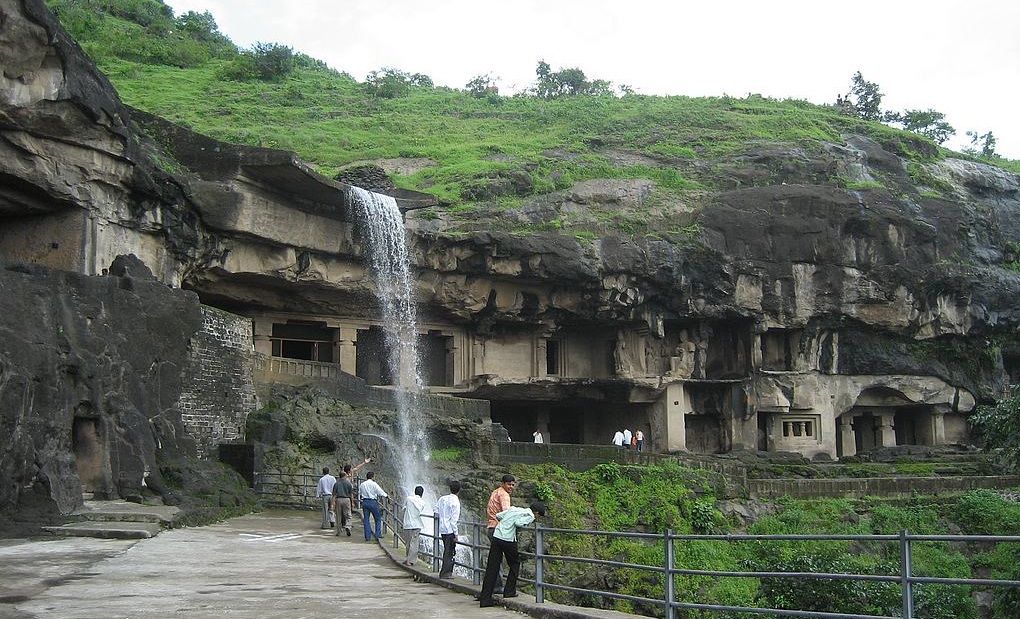The Ellora Caves are an impressive complex of Buddhist, Hindu and Jain cave temples built between the 6th and 10th centuries AD near the ancient Indian village of Ellora in the Indian state of Maharashtra. Ellora, with its uninterrupted sequence of monuments brings the civilization of ancient India to life. The caves have a slightly less dramatic setting than those at Ajanta, but more exquisite sculptures. Ellora is a World Heritage Site and the most visited ancient monument in Maharashtra State.
The caves at Ellora were carved out of the vertical face of the Charanandri hills between the 6th and 10th centuries. The carving work began around 550 AD, about the same time the Ajanta Caves (100km northeast) were abandoned. The Ellora Caves were built at time when Buddhism was declining in India and Hinduism was beginning to reassert itself. The Brahmanical movement was especially powerful under the patronage of the Chalukya and Rashtrakuta kings, who oversaw most of the work at Ellora.
The Ellora caves are one of the largest rock-hewn monastic-temple complexes in the entire world. Ellora is also world famous for the largest single monolithic excavation in the world, the great Kailasa temple (Cave 16).
The Ellora complex is a unique artistic creation and a technological exploit. The caves, with its uninterrupted sequence of monuments dating from AD 600 to 1000, brings the civilization of ancient India to life.

The Ellora Caves illustrate the spirit of tolerance, characteristic of ancient India, which permitted three religions to establish their sanctuaries and their communities in a single place, which thus served to reinforce its universal value.
The last period of building activity took place in the 10th century, when the local rulers switched allegiance from Shaivism (Hinduism devoted to Shiva) to the Digambara sect of Jainism.
There are 34 caves in all: 12 Buddhist caves (500-750 AD), 17 Hindu caves (600-870 AD) and 5 Jain caves (800-1000 AD). The caves are numbered roughly chronologically, starting with the oldest Buddhist caves at the south end. These religious establishments could have received royal patronage from various dynasties, even though inscriptional evidences are lacking for most of them. The only definite inscriptional evidence is that of Rashtrakuta Dantidurga (c. 753-57 A.D.) on the back wall of the front mandapa of Cave 15.
The caves become steadily larger and more elaborately decorated as they progress to the north, which scholars have explained by the growing need to compete with Hinduism for patronage.
Created during a time of prosperity and revival of Hindusim, the Hindu caves represent an entirely different style of creative vision and skill than the Buddhist caves. The Hindu temples were carved from top to bottom and required several generations of planning and coordination to take shape.
There are 17 Hindu caves in all (numbered 13 to 29), which were carved between 600 and 870 AD. They occupy the center of the cave complex, grouped around either side of the famous Kailasa Temple.

In contrast to the serene and solemn Buddhas of the earlier caves, the walls of the Hindu caves are covered in lively bas-reliefs depicting events from the Hindu scriptures. All of the caves are dedicated to the god Shiva, but there are also some images of Vishnu and his various incarnations.
The most notable Hindu cave is not a cave at all, but a magnificent temple carved from the solid rock, patterned closely on the freestanding temples of the time. It represents Mount Kailash, the abode of Lord Shiva, and is called the Kailasa Temple. It originally had a thick coat of white plaster to make it look like a snowy mountain.

The Kailash Temple is a stupendous piece of architecture, with interesting spatial effects and varied sculpture. It is believed to have been started by the Rashtrakuta king Krishna I (756-773). The construction was a feat of human genius – it entailed removal of 400,000 tons of rock, took 100 years to complete and covers an area double the size of Parthenon in Athens.

The Jain caves, dating from the late 800s and 900s, are 2 km north down an asphalt road. They reflect the distinctiveness of Jain philosophy and tradition, including a strict sense of asceticism combined with elaborate decoration. They are not large compared to others, but contain exceptionally detailed artworks. Many of the Jain caves had rich paintings in the ceilings, fragments of which are still visible.
The Ellora caves, unlike Ajanta, have a distinction that they were never lost to oblivion, due to their close proximity to the trade route. There have been numerous written records to indicate that these caves were visited regularly by enthused travellers and royal personages as well.







[…] cave temples built between the 6th and 10th centuries AD near the ancient Indian village of Ellora. Continue Reading… The Elephanta Caves are a complex of ancient cave temples on Elephanta Island, located 10 km away […]
[…] by the locals, and is dedicated to Lord Shiva. One can spot some resemblance to the Ajanta and Ellora caves, which are around 300 km from […]